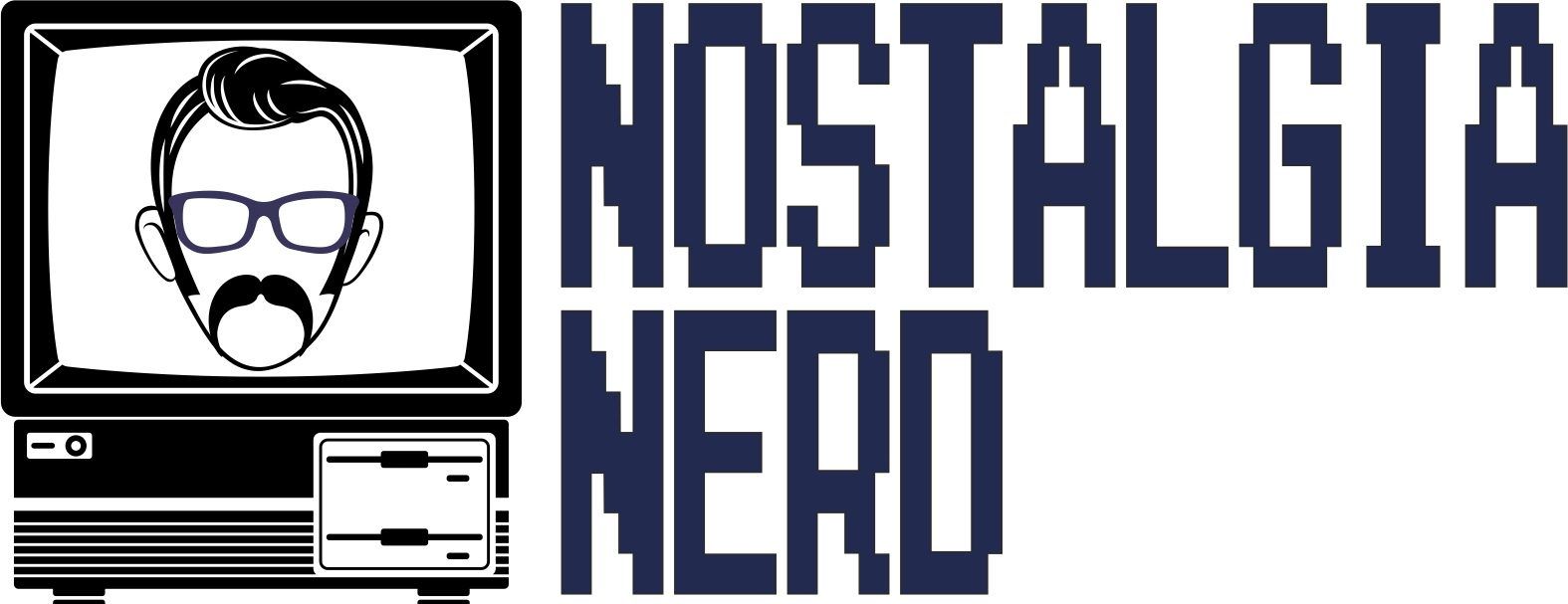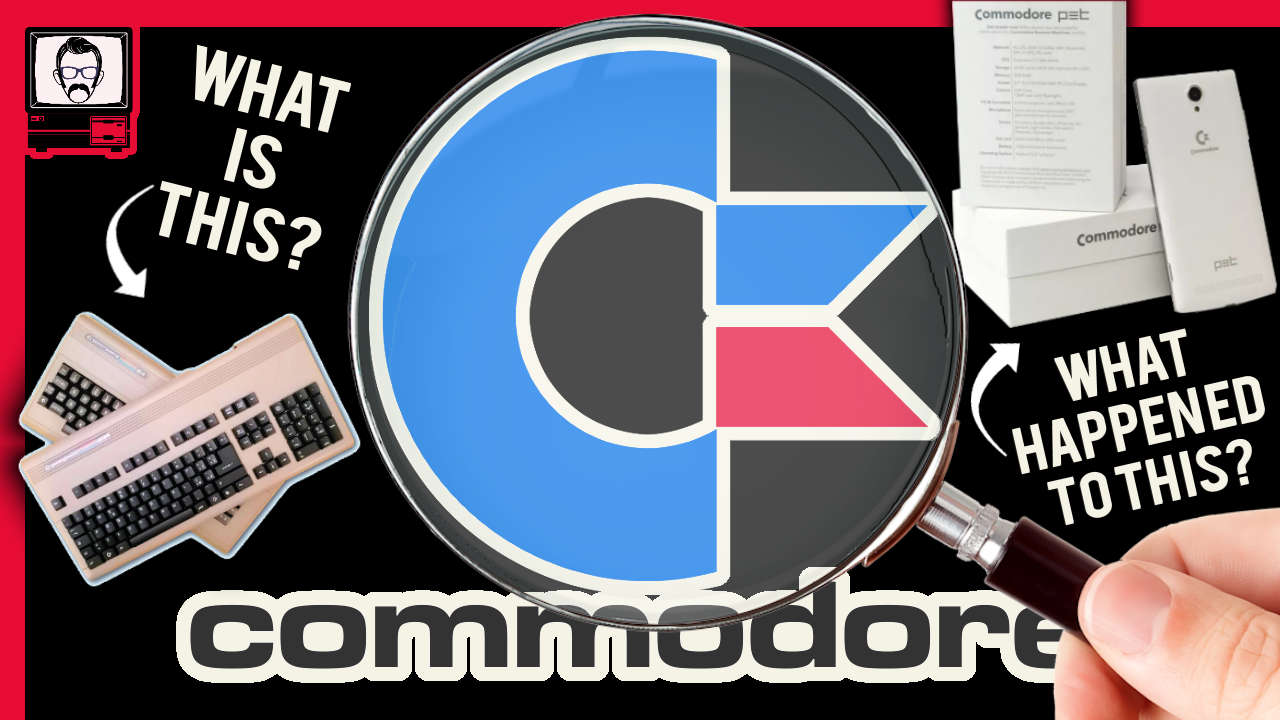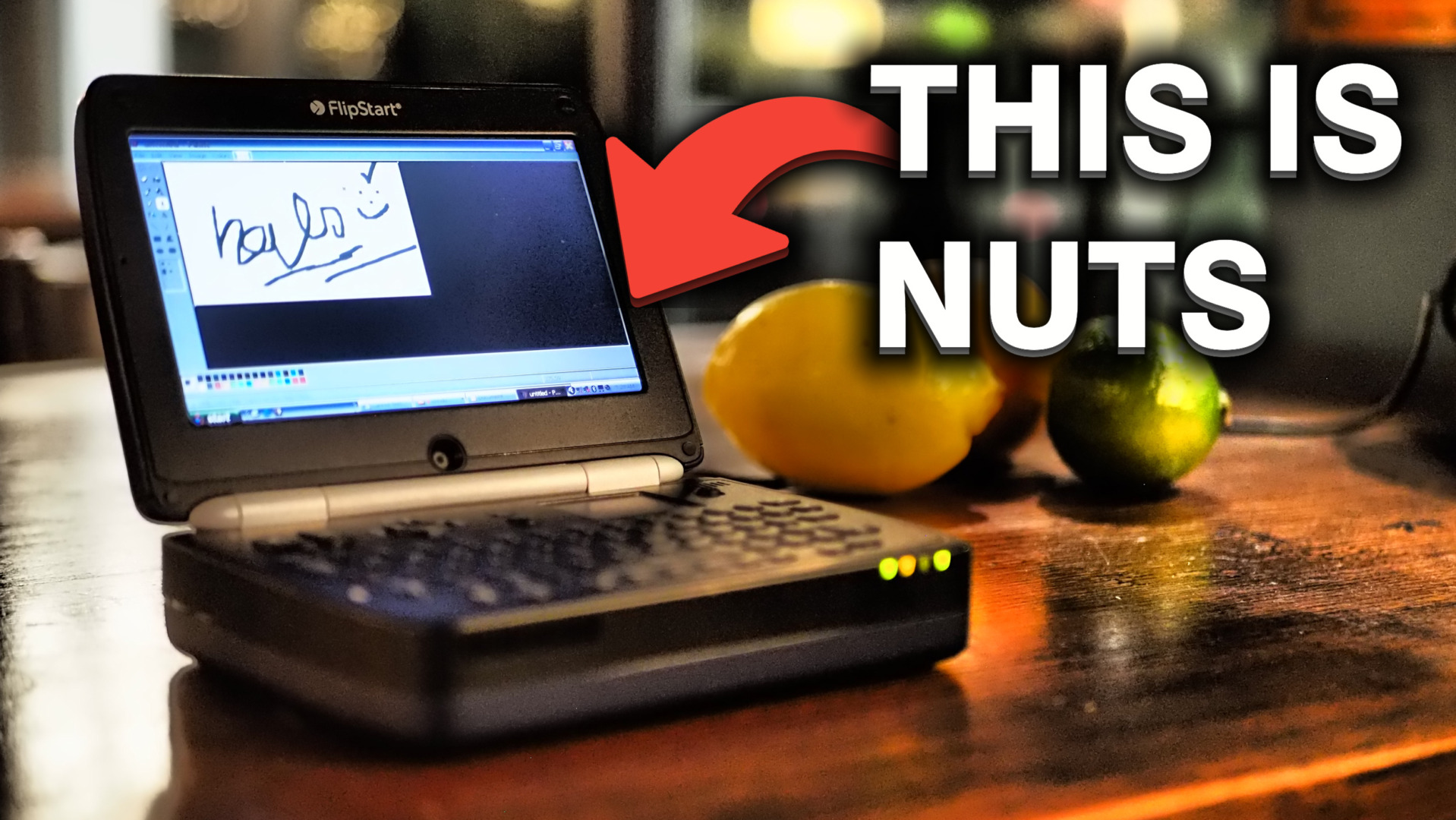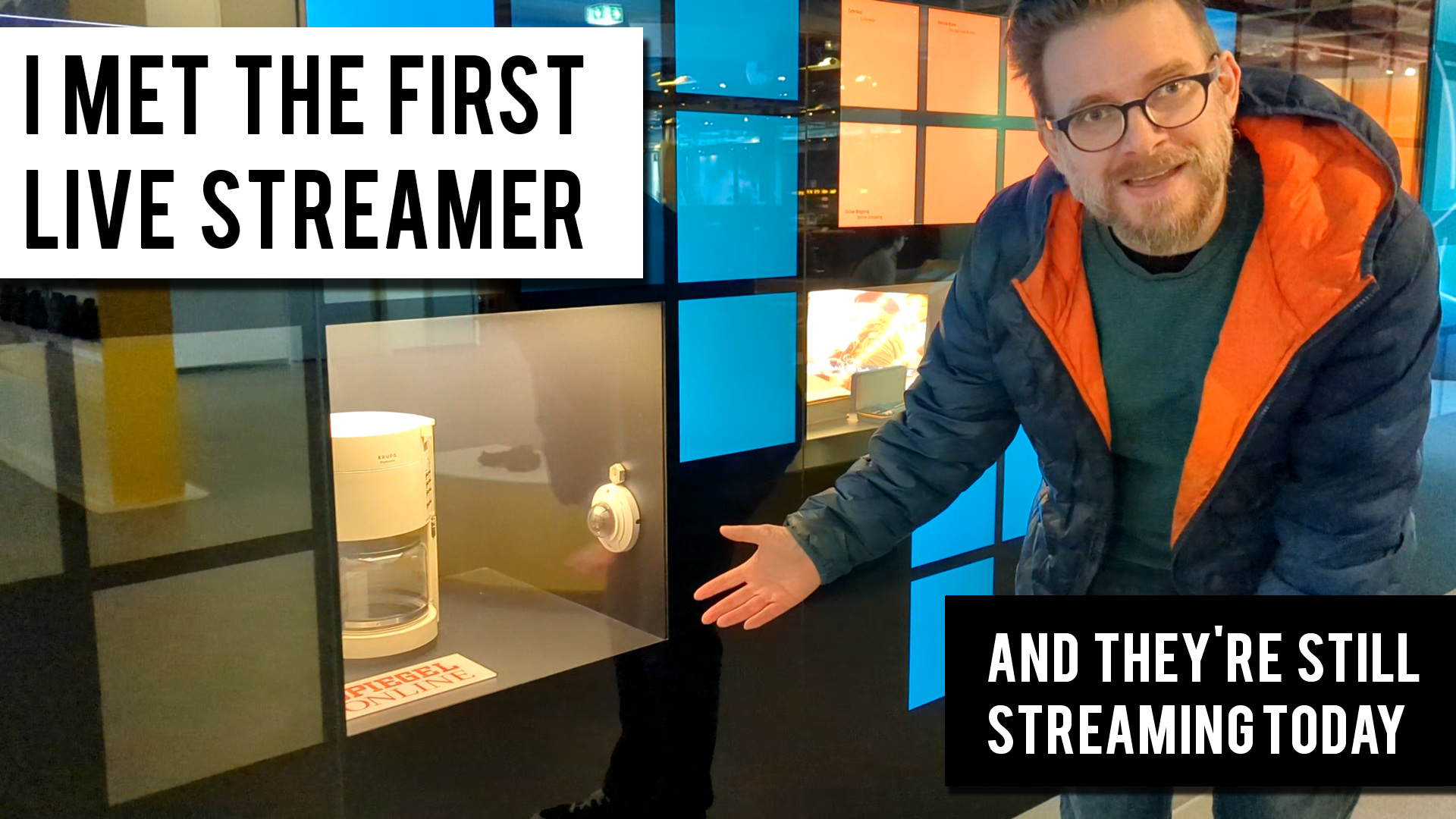Released in Japan and North America in 1989, Nintendo’s Game Boy quickly became the latest gaming tech to have. The Famicom and NES had already solidified themselves as the console of choice in these areas, and having that Nintendo magic in your pocket was a no brainer. Arriving in Europe a year later, it sold even quicker, which was surprising given Europe’s preference for the Master System over Nintendo’s console. But the Game Boy did a lot right which arguably better machines like the Game Gear and Atari Lynx couldn’t compete with;
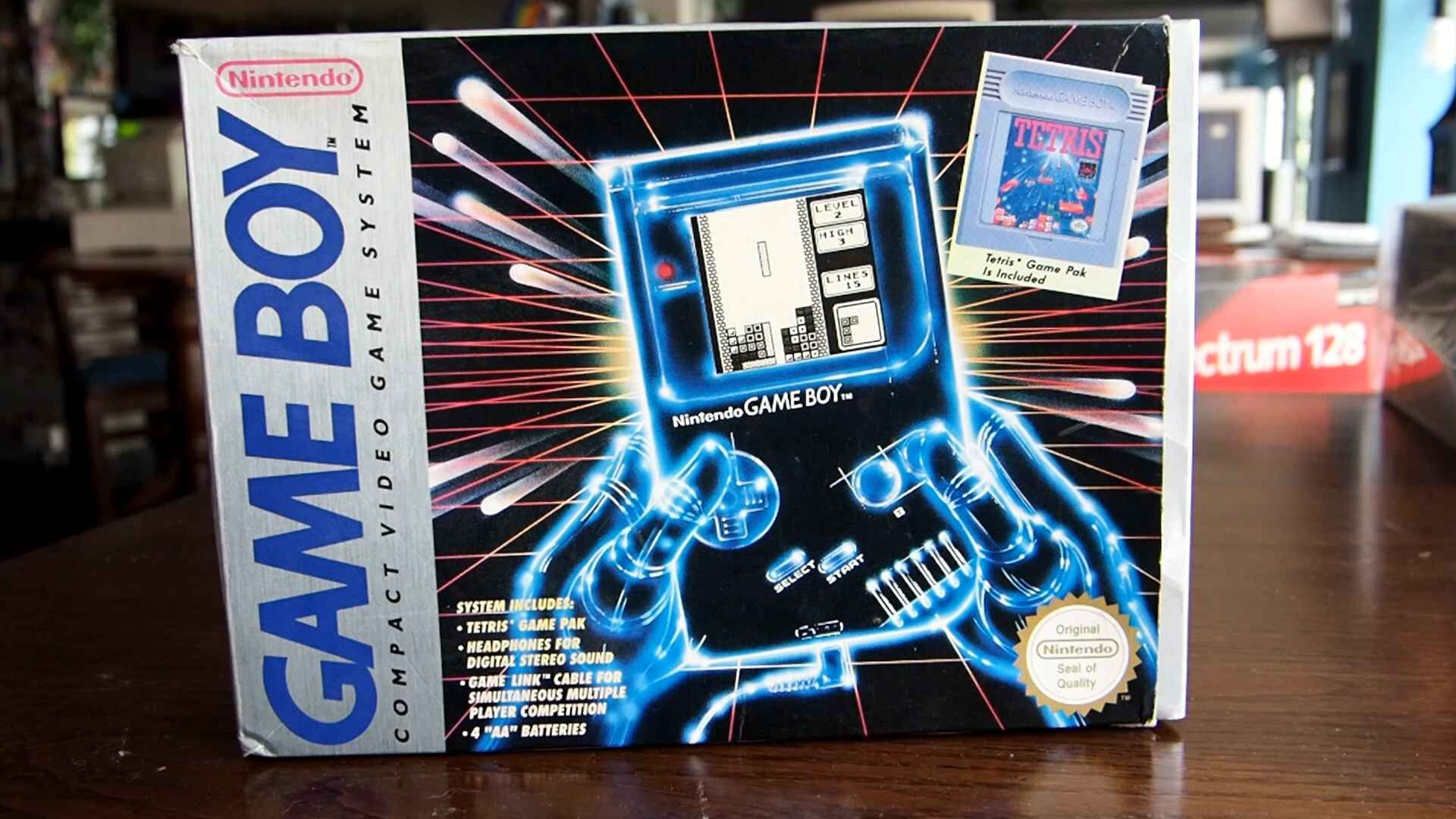
Battery life, some killer titles and a superb marketing campaign really worked in the Game Boy’s favour, and although these points evaded Sega and Atari, there were some other, lesser known manufacturers who felt they could sneak in and capitalise as well.
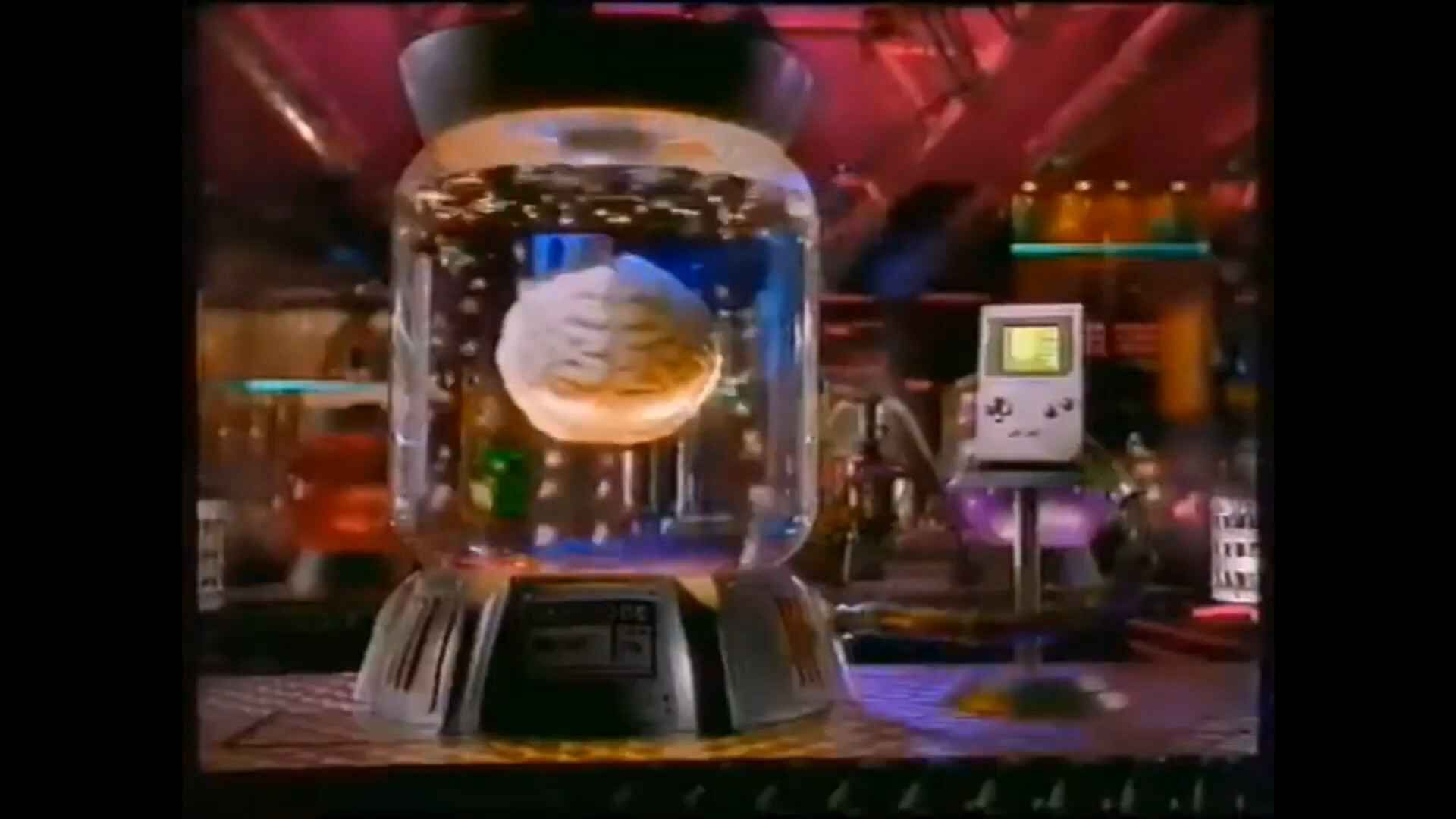
BUT THEY WERE WRONG. So wrong.
The Game Master
The first to make it to Europe was the Game Master, released in France and Germany sometime in 1990. Originally an Asian system distributed by Watara, it was picked up by German toy manufacturer Hartung and then distributed in other European countries by other companies. Hartung’s idea here was simple; capitalise on a market where the Game Boy hadn’t yet become dominant by selling a similar console at a cheaper price.
And it COULD have worked, if not for this;
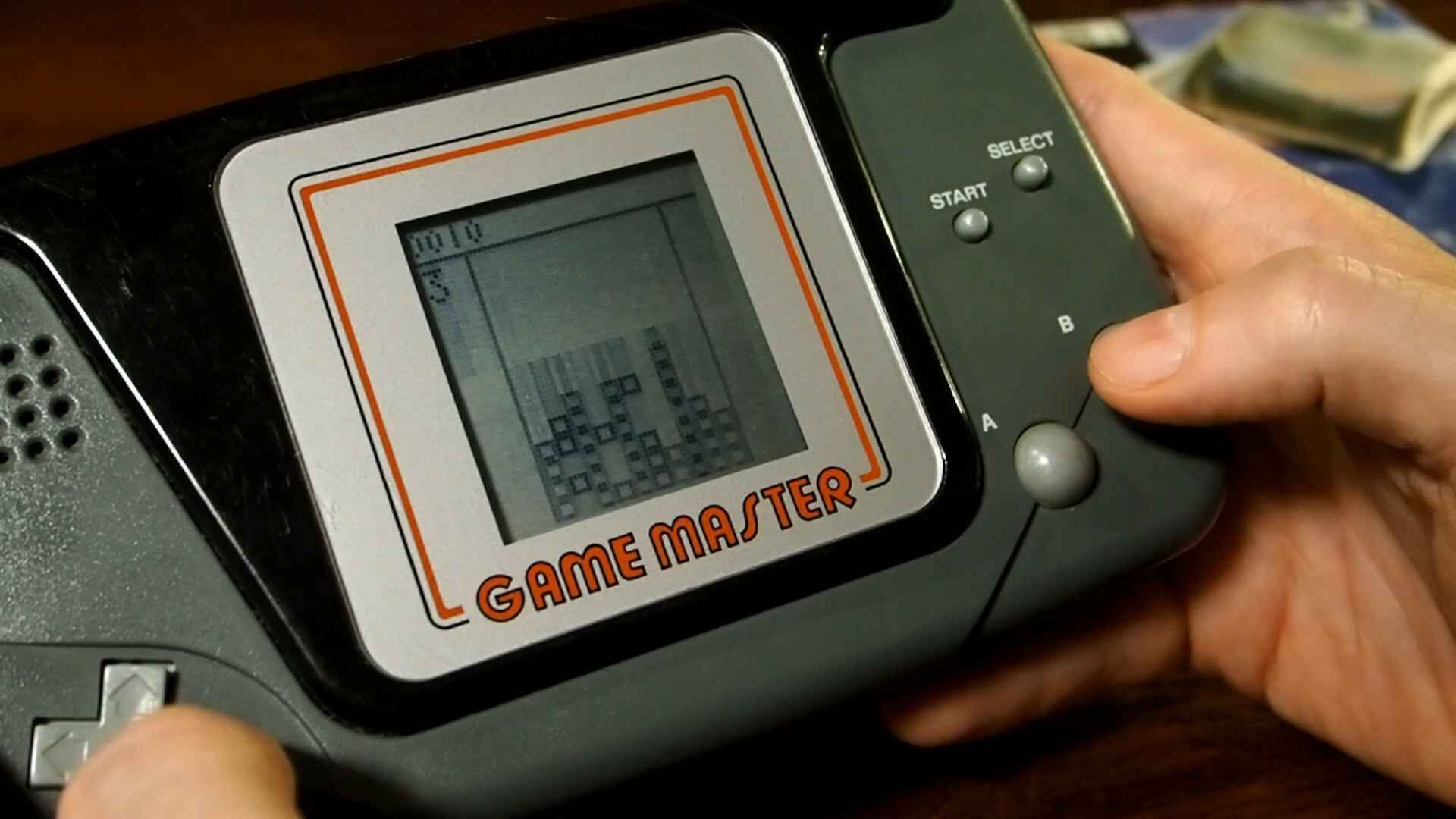
Christ. The games are absolutely pitiful. At least 19 titles were released for the Game Master, and at least 19 of them were utter, utter tripe.
Bundled we get Falling Block; of course we do; it’s a Tetris rip off, but it’s utter dog shit.
Tetris is a great game. It has great music. It has a nice difficulty curve. It’s addictive.
THIS is like someone has poured Tetris out into a bucket, and all the good elements have dripped on the floor. It is, essentially Tetris, but it lacks the charm, the fun, and on top of it all, we’ve got this weird, slanted directional pad. WHY is it even like that? It’s a nuisance.
If you can get past some of the artwork on the packaging, we can attempt to play some games. Here’s Space Castle, it’s a schmup, that really highlights how limited the screen is. It’s not terrible. There are far worse, but we have to turn the contrast up to really see what’s going on, and that produces this upsetting ghosting effect. But the real limitation is the 64×64 monochrome LCD grid. The Game Boy has a resolution of 160×144 allowing for 4 shades of green, which allows for a decent enough level of detail, but with the Game Master, things have to be drawn as blocks or sticks.
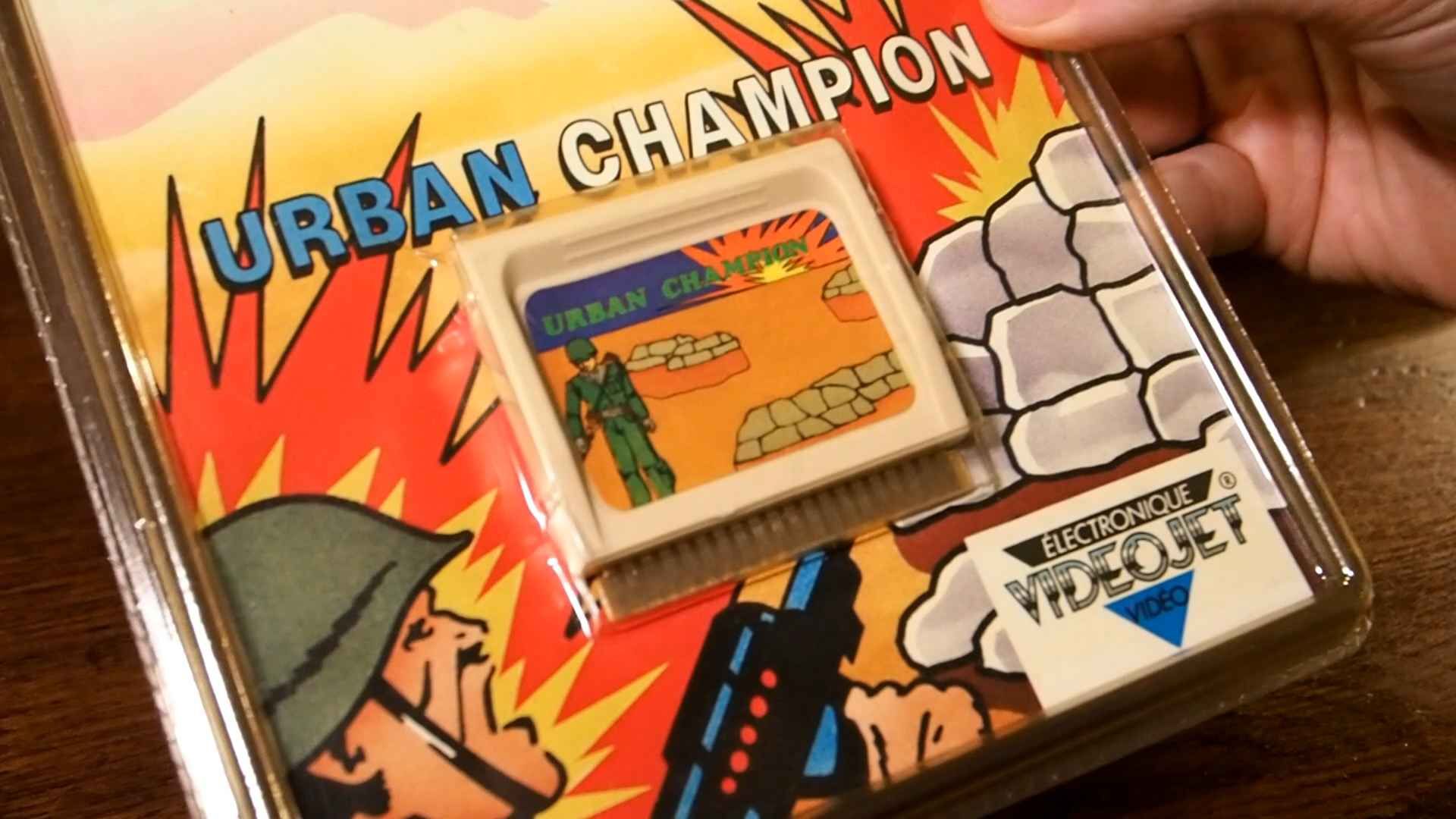
Here’s Kung-Fu, which is just about playable, but it’s literally stick figures.
Don’t get me wrong, for any child that’s used to Tiger handheld games, this would have been a revelation, but it wasn’t going to stand up to the experience offered by the Game Boy, and being 2/3rds of the price wasn’t going to make up for that. I mean, can you imagine being a kid and opening this up on Christmas morning. Your parents would think they’d outsmarted the system by getting a “game system” for half the usual price, but you would be like a crushed relic, a broken spoon, absolutely dismayed inside, whilst putting on a front of utter glee and excitement. These are the kids who garnered the skills to be door-to-door salesman. Acting excited over something that was utter, utter shite.
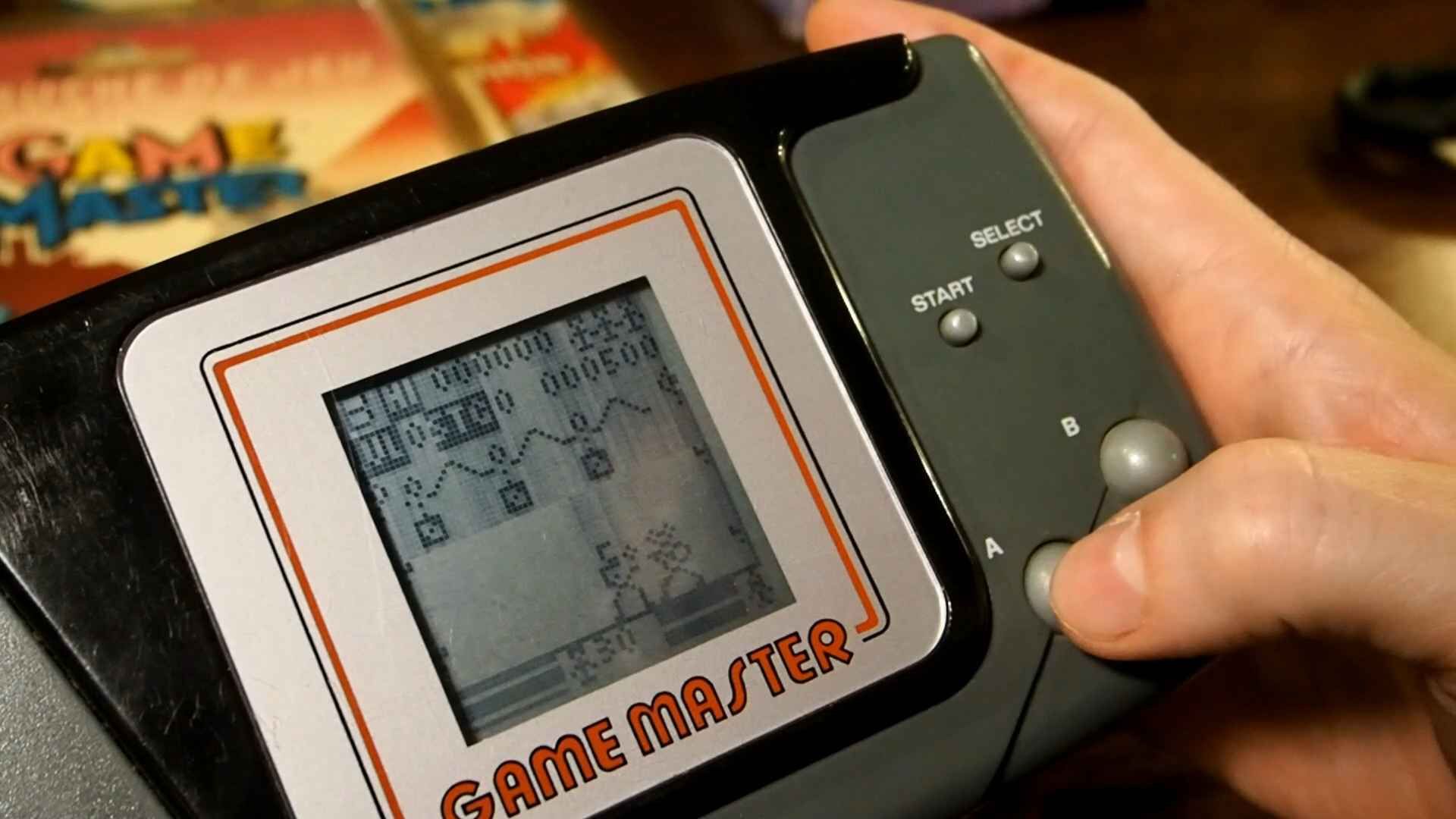
For those who did play the console for long, the 4 AA batteries would get you several hours of gameplay. Headphones would provide beeps directly to your ears, and the 2KB of RAM combined with an 8 Bit NEC MPD78C11A meant you really had nothing else to live for.
By 1991, Hartung had pushed the system out in Spain, Italy and Portugal, but the rights were non exclusive in France with companies like Video Jet and Delplay also releasing their own variations. Deplay would actually reconfigure the console entirely to make it more like a Game Boy; sorting the weird directional pad, and adding protection so that only their cartridges could be played in the device. However, the main problem was the core hardware and the lack of games available, which didn’t go away by improving the outer case.
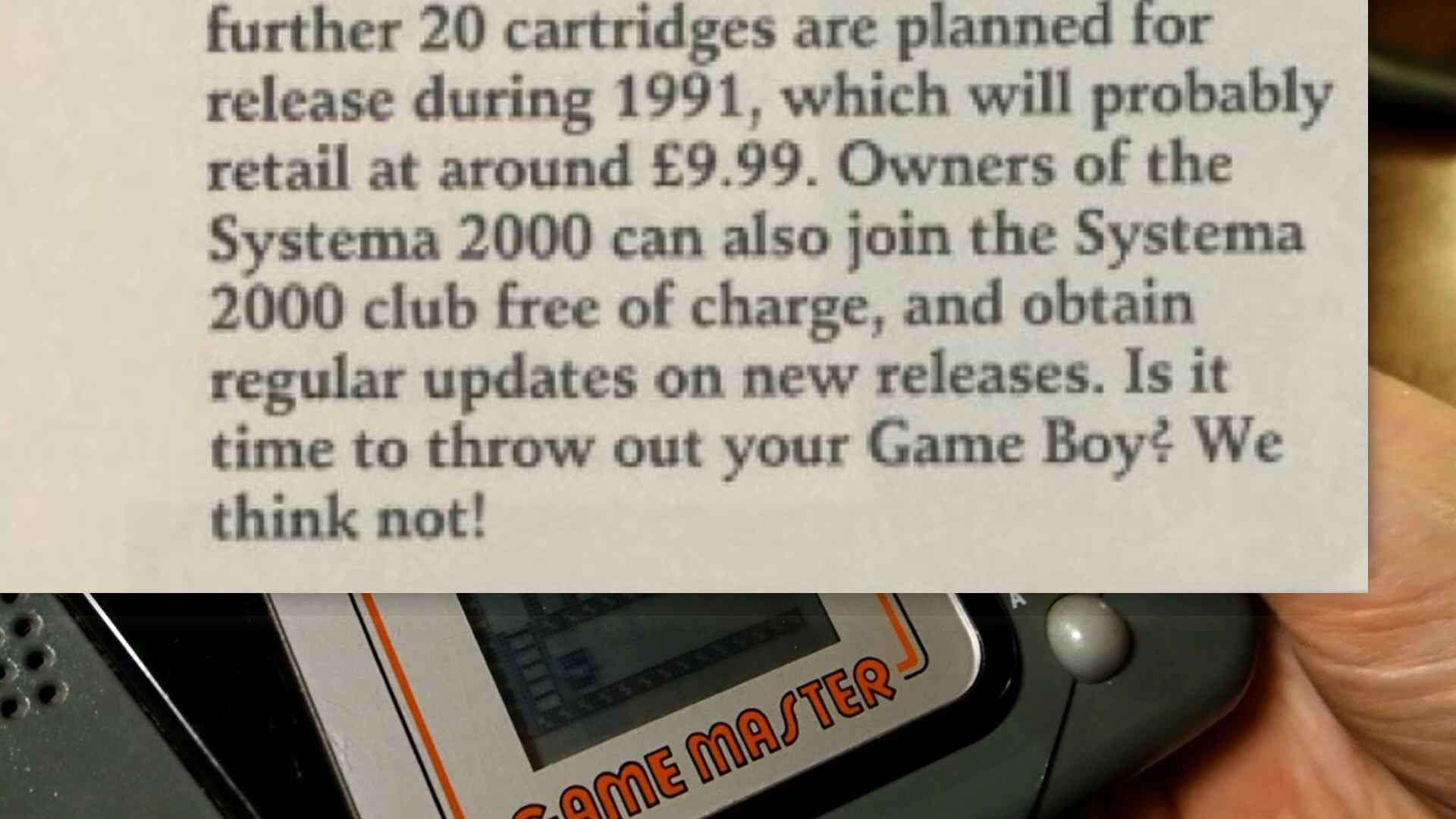
By late 91, Systema decided it should launch in the UK, as the Systema 2000. Priced at £49.99, and undercutting the Game Boy by about £30, but it was just too late. Gaming magazine The One wrote “is it time to throw away your Game Boy? We think not”, even with the promise of the “free of charge” Systema 2000 club, and an additional 20 games promised before the end of the year.
But that didn’t stop other manufacturers from getting in on the act….
Gamate
Generally seen as a much more competent handheld, this one was developed by Bit Corporation, operating out of Tapiei, Taiwan, in 1990. Bit Corporation had made a number of clone consoles in the past, so had a good chunk of knowledge of the gaming industry, and had the same idea, to capitalise on the launch of the Game Boy. Originally launching in China and Taiwan, Bit Corporation had enough contacts to also push the console out in other markets.
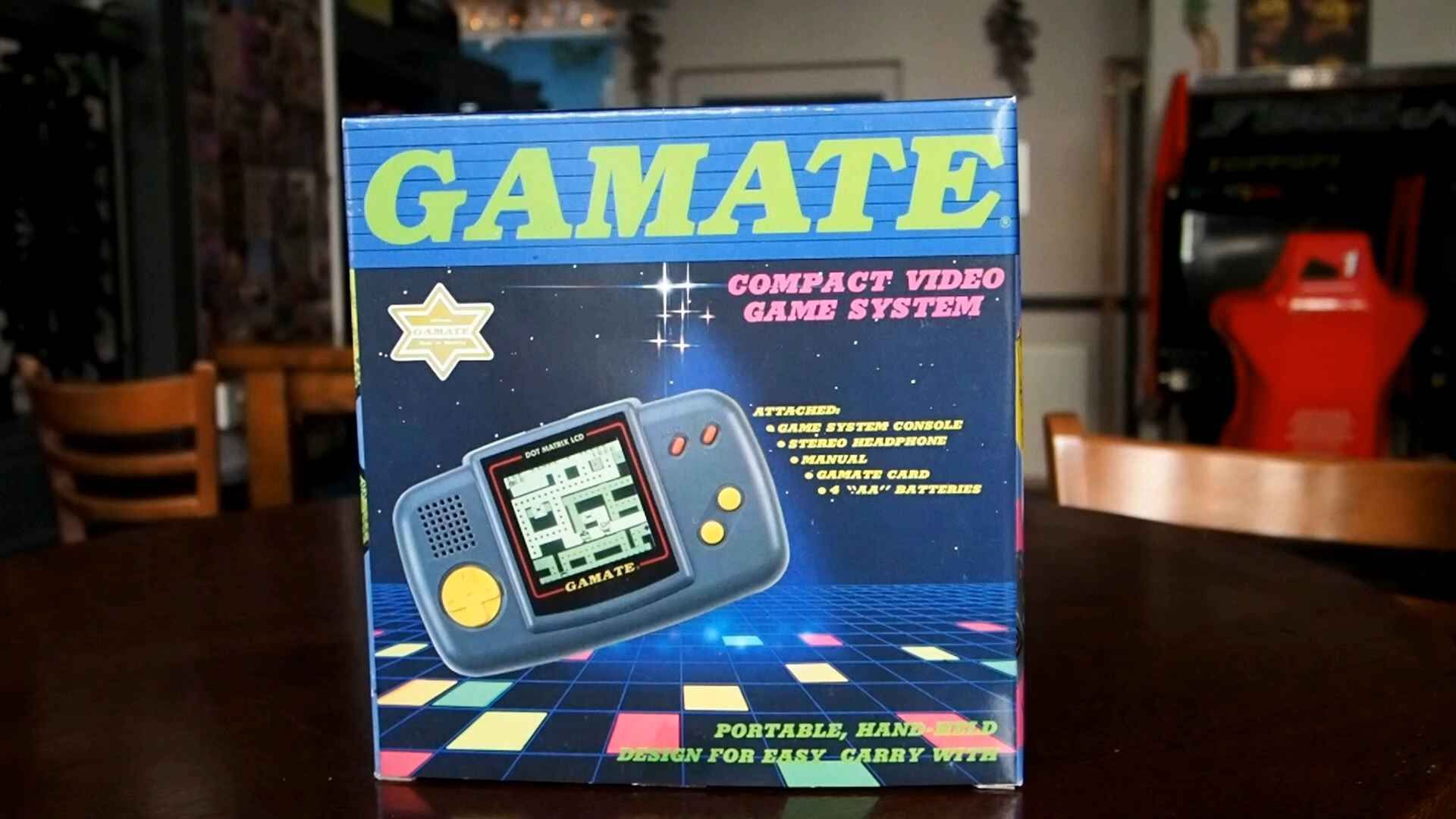
Interestingly, this isn’t the first machine to carry the name. Vtech released the Gamate 3D back in 1983; a kind of cartridge version of the TomyTronic series, and the first 3d handheld game system. It did not sell well.
By early 1991, the Gamate was not only released in Australia and Argentina, but also most of Europe and the United States, although the latter only by mail order. In the UK, distribution was handled by the well known peripherals and joystick manufacturer Cheetah; pricing the console at £59.99, about £20 less than the Game Boy.
Compared to the Game Master, the Gamate is much closer to the Game Boy in terms of spec and operation. Again, it consumes 4 AA batteries, but has a 4 shade 160×152 pixel screen. It packs 16KB of RAM, an AY sound chip and a 6502 based CPU. Although it looks similar to the Game Master, we’ve got a much more friendly layout here, plus like the Game Boy, we can connect two consoles together with a link cable.
Interestingly, carts come in the form of cards, much like the PC-Engine, which limits for scope for features like battery backup save games, but to be honest, it would have been bold to assume the Gamate would get that far.
Out of the box we get a little game called Cube-up. Of course we do. Guess what? Yup, it’s Tetris clone, with the important words “Don’t touch golden finger by hands” on the rear. Pffft, the audacity to even think I would.
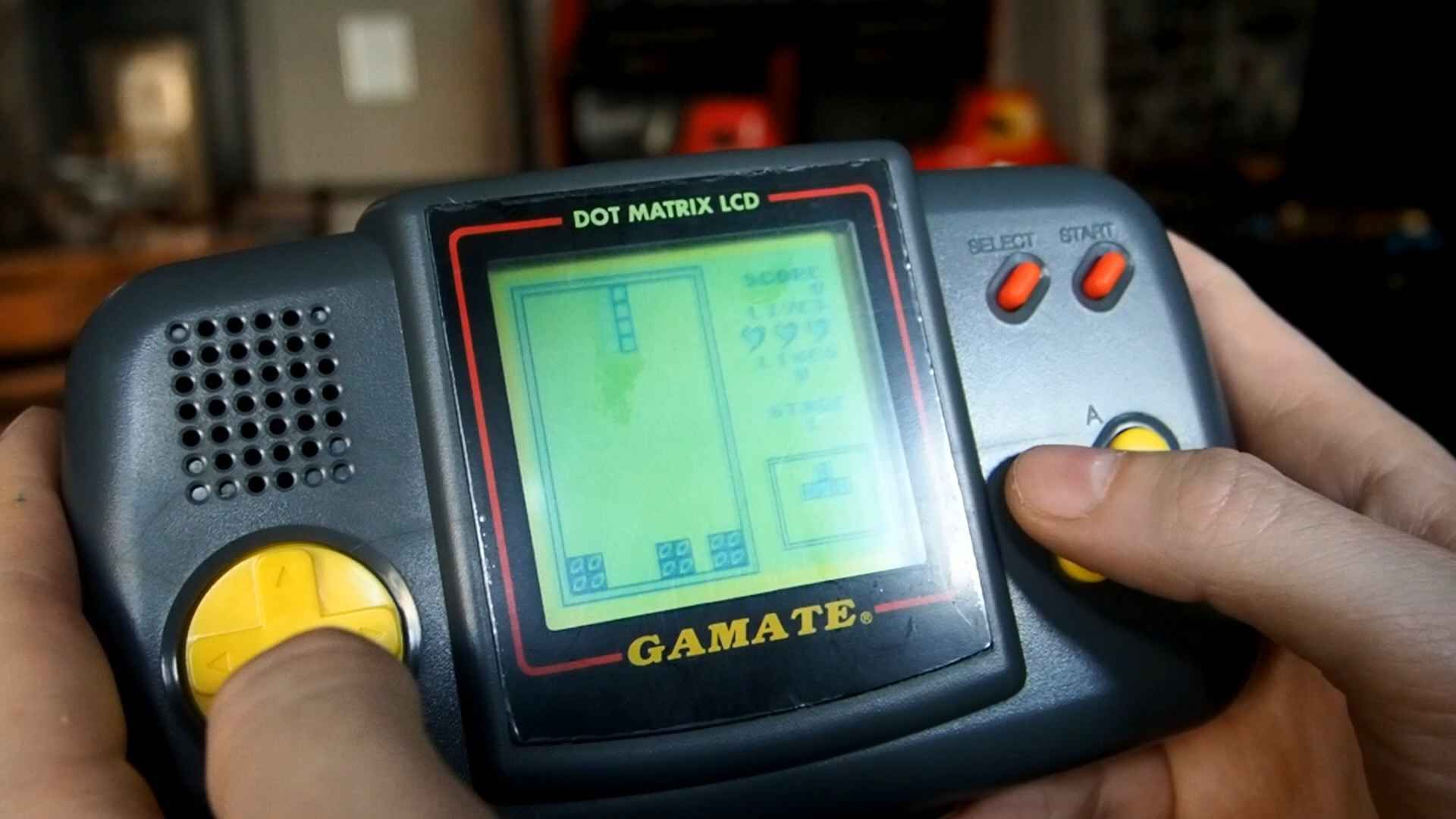
LISTEN TO THAT MUSIC. Definite ZX Spectrum vibes.
Cube-Up is actually a decent clone to be fair. The music is a little intense. It’s definitely no Korobeiniki. But overall it’s a good attempt… and you wouldn’t be short of titles for this one either. There are reportedly, 71 titles for this little console, although with most of them churned out by Bit Corp.; you might imagine the quality starts to slip a bit.
Just like the Game Master that slippage starts with the box art. Game Boy box art is generally fantastic. It gets the neurons firing. It makes you want to play. This stuff is absolute nightmare material. Look at this guy, he looks like he’s just had something unexpected shoved up his a**. He’s not even sure what it is.
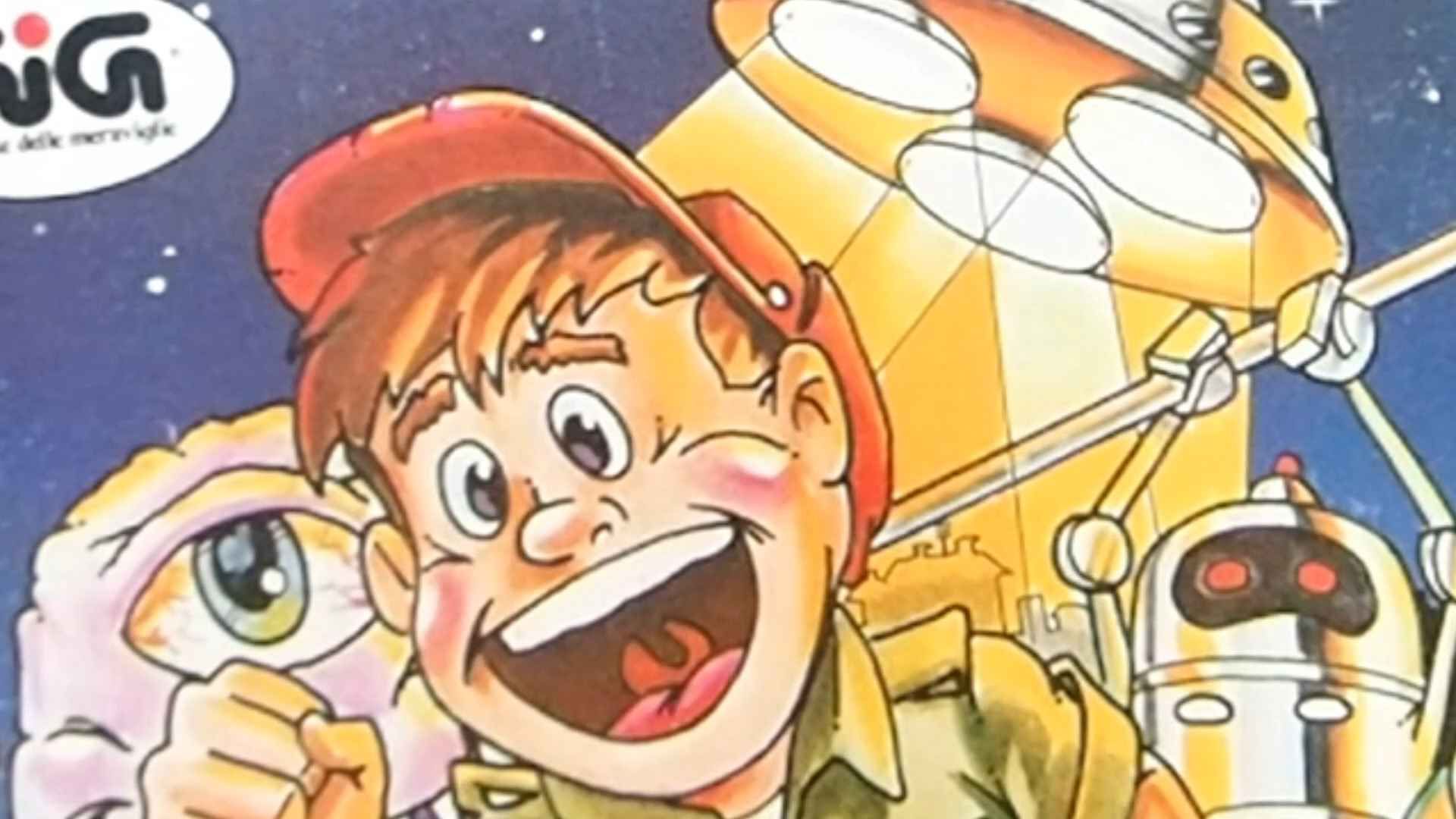
Ahh yes, Kill Shot. What an incredible shoot ’em up. So graceful. I couldn’t put it down.
Myth of Asamia is a platformer.
Box Forum is a game.
Monster Pitfall is also a game. Like Pitfall.
This is really the issue. The Game Boy had massive publishers and developers releasing titles, but Gamate had themselves, furiously trying to produce games as quick as possible. Bold aspirations, but it was always going to be a game of catch up.
Plus the Gamate suffers from extreme motion blur. Worse than the Game Boy, to the point where you often just can’t see what’s going on. But it seems Bit Corp. were using two suppliers for screens, and one of them is better than the other. So if you were one of the lucky ones, you’d get only terrible motion blur, as opposed to absolutely atrocious.
In either case, the Gamate would still lead to the untimely demise of Bit Corporation by the end of 1992. Taiwanese chip manufacturer, UMC would take over manufacture, and actually extracted a couple more years life out of the little console. Releasing several titles themselves, and gaining a little resurgence in Italy, and even the UK, where it was relaunched by Maplin. But it was never going to cut it, pretty much dying out by 1993, although UMC released The Golden Pyramid and Insect War in 1995, as a last salute to its fans.
Watara Supervision
A console that fared slightly better than both of these, and that was pushed on the UK TV show Bad Influence was, of course, the Watara Supervision, distributed in the US by Goldnation and in the UK by QuickShot; another joystick manufactuer.
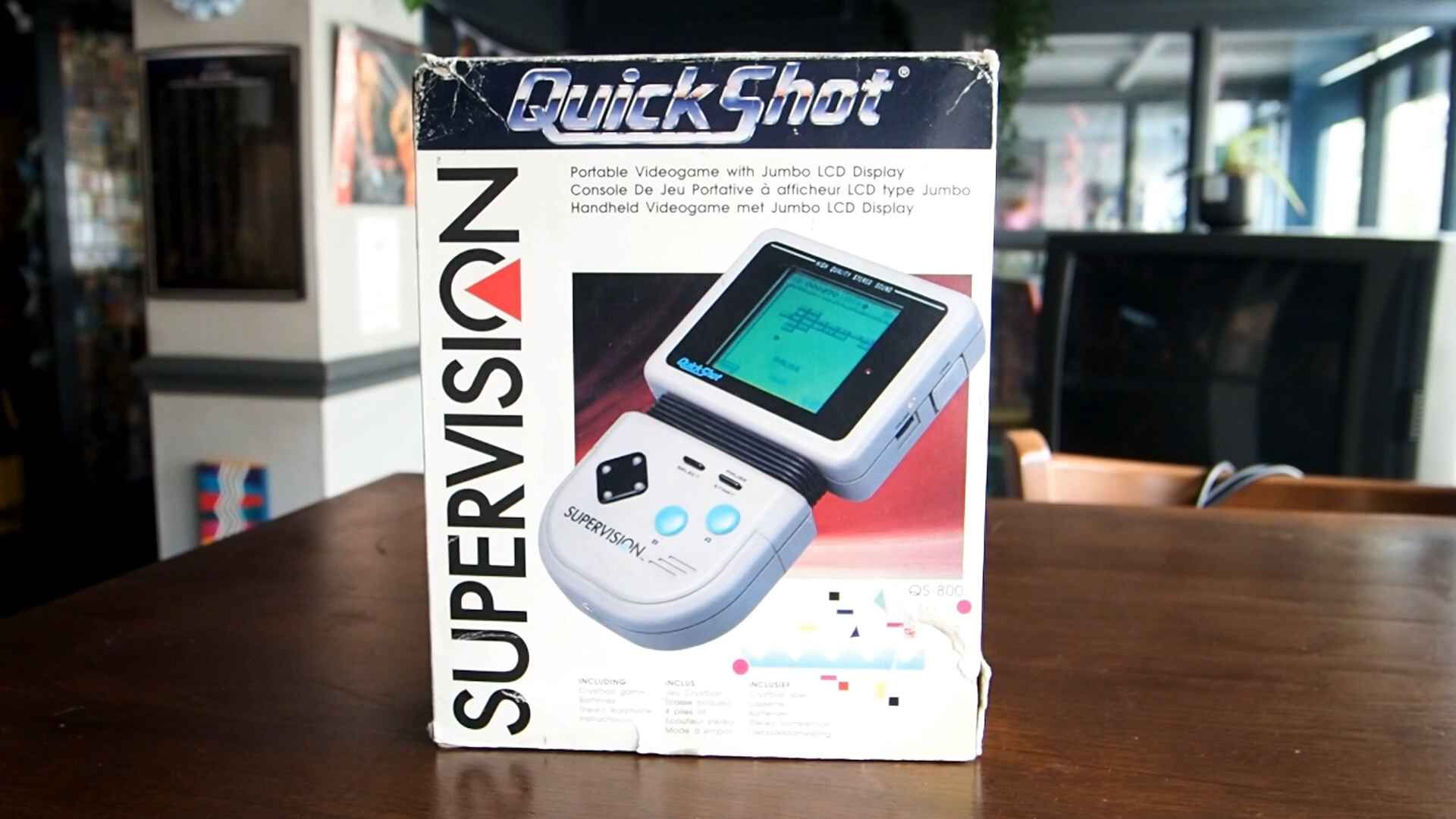
I’ve actually spoken to Violet about why they kept talking about the Supervision, and I quote “We had to”. Yup, Watara actually paid the production company to push the console, in the hope that it would catch on, and to some extent it kinda worked. I know that I wanted one.
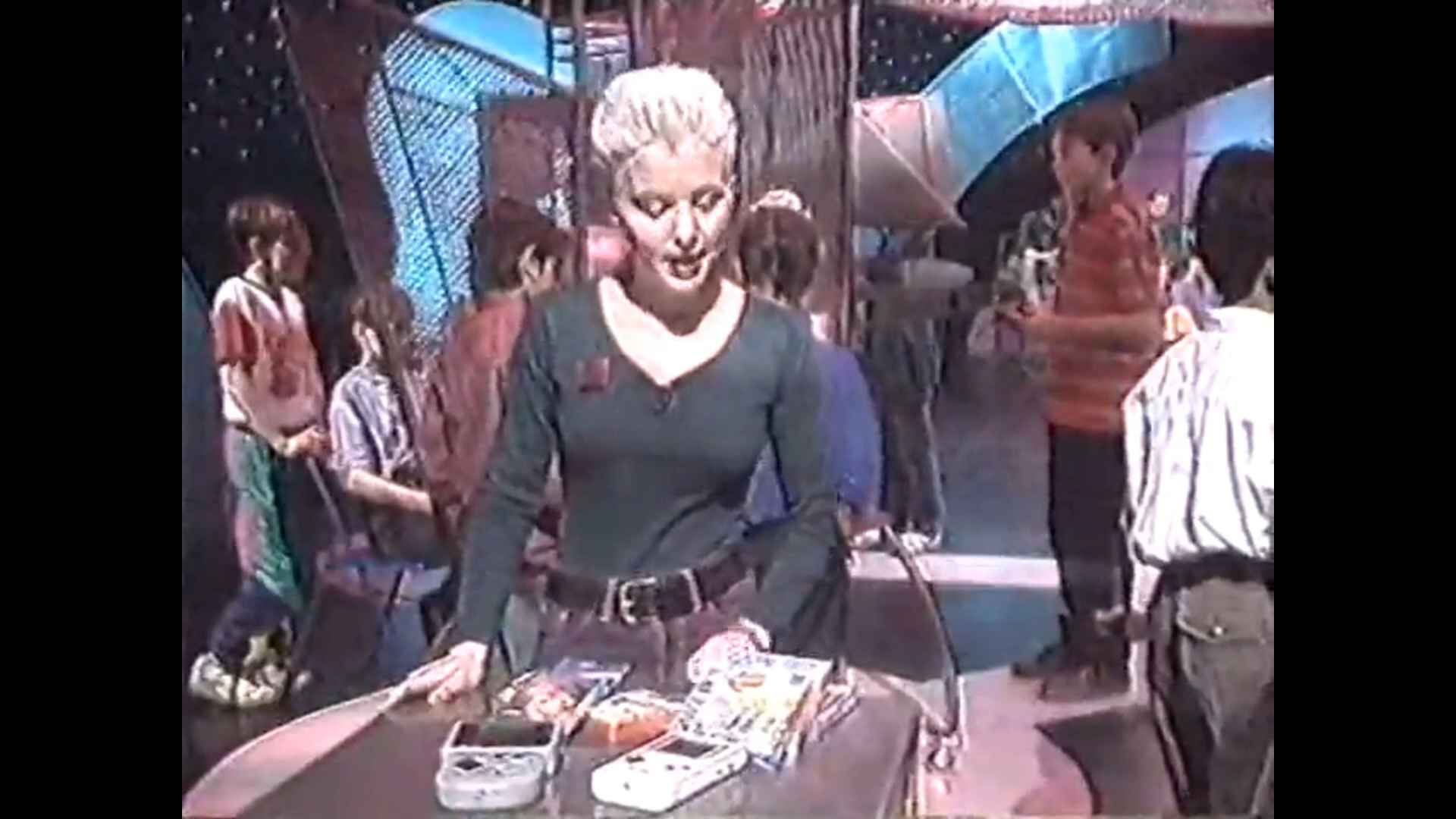
Although late to the party, the Supervision was the first handheld that seemed like a viable competitor. I mean, leaving the Game Gears, Lynxes, PC Engines and Wonderswans aside of course. It not only undercut the Game Boy in price, retailing at a similar price to the previous clones, but it actually had the edge in some specifications. The CPU was a familiar 6502 compatible affair, but the 61mm 160×160 pixel screen with 4 shades of grey was significantly larger than Nintendo’s offering. The model received in the UK and America, also had this tilt mechanism, allowing you to reduce glare that made these screens so problematic.
Although, it’s more of a novelty than anything else. You know this.
Original Taiwan versions actually looked like this; much more like a Game Boy, but it was felt the snazzy hinged version would set it apart in Nintendo dominated markets. An accessory that connected it directly to the TV, allowing 4 colour mode, like the Super Game Boy, was also promised, but never released. Hype and momentum was the order of the day here.
Another selling point, like the other consoles was the cheaper games. £15 for a title was certainly more appealing for parents than a £40 game, but maybe not for the gamers themselves, with titles like the bundled Crystball – a breakout clone – failing to appeal.
I mean, LISTEN TO THAT DAMN TUNE. It’s not hard to see why. Christ.
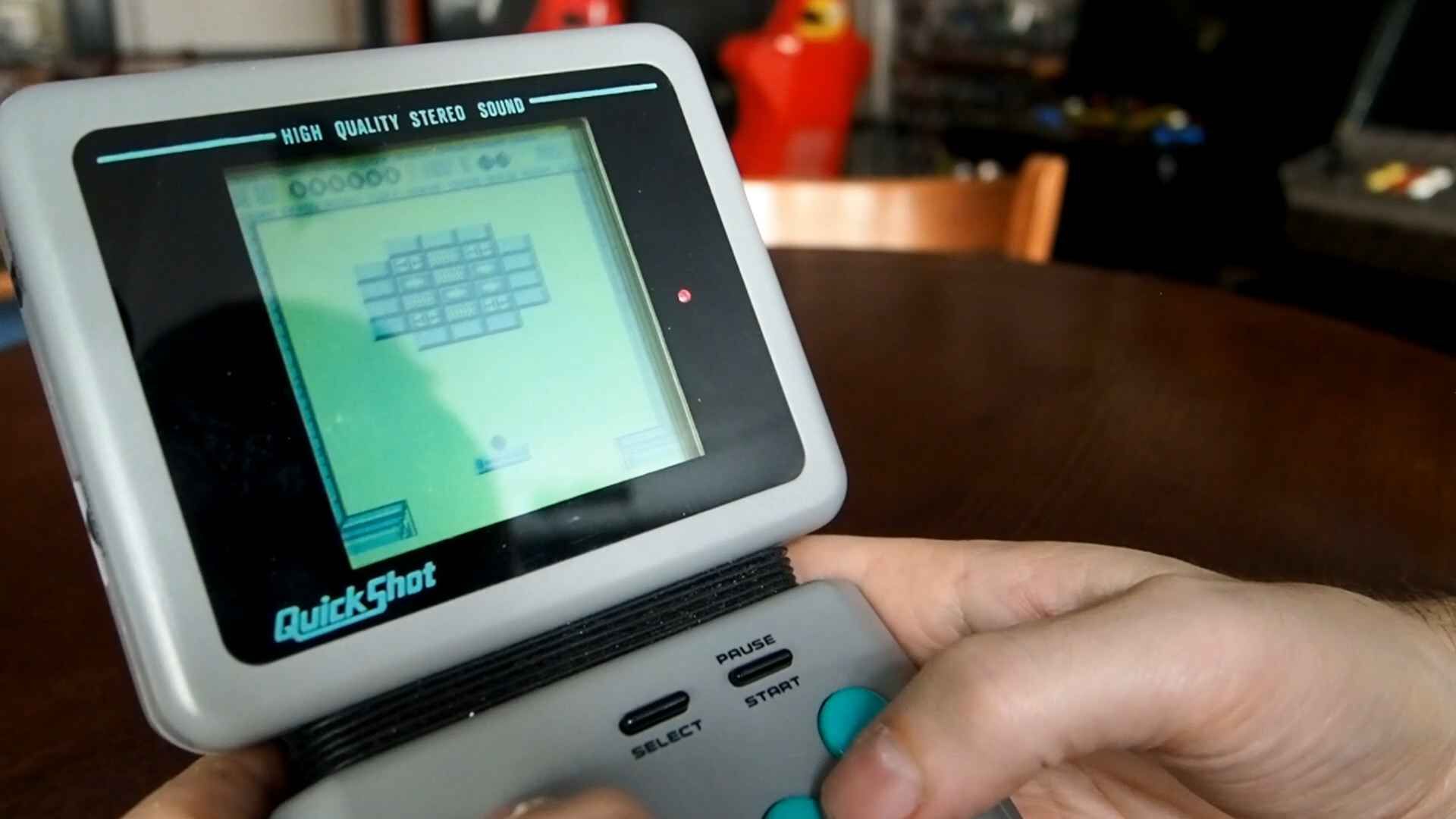
Electronic Games Magazine put it best when they wrote “It’s still possible to be disappointed in a game that costs less than $15”
The Supervision was previewed at the 1992 CES, with 18 launch titles and promises of over 50 by the end of the year. With licenced titles including Rambo and Terminator to follow in 1993… But this is a tune we’d heard before. This importers and distributors had to make big promises. They had to hype these products up. Otherwise, they stood no chance. Turns out they stood no chance anyway.
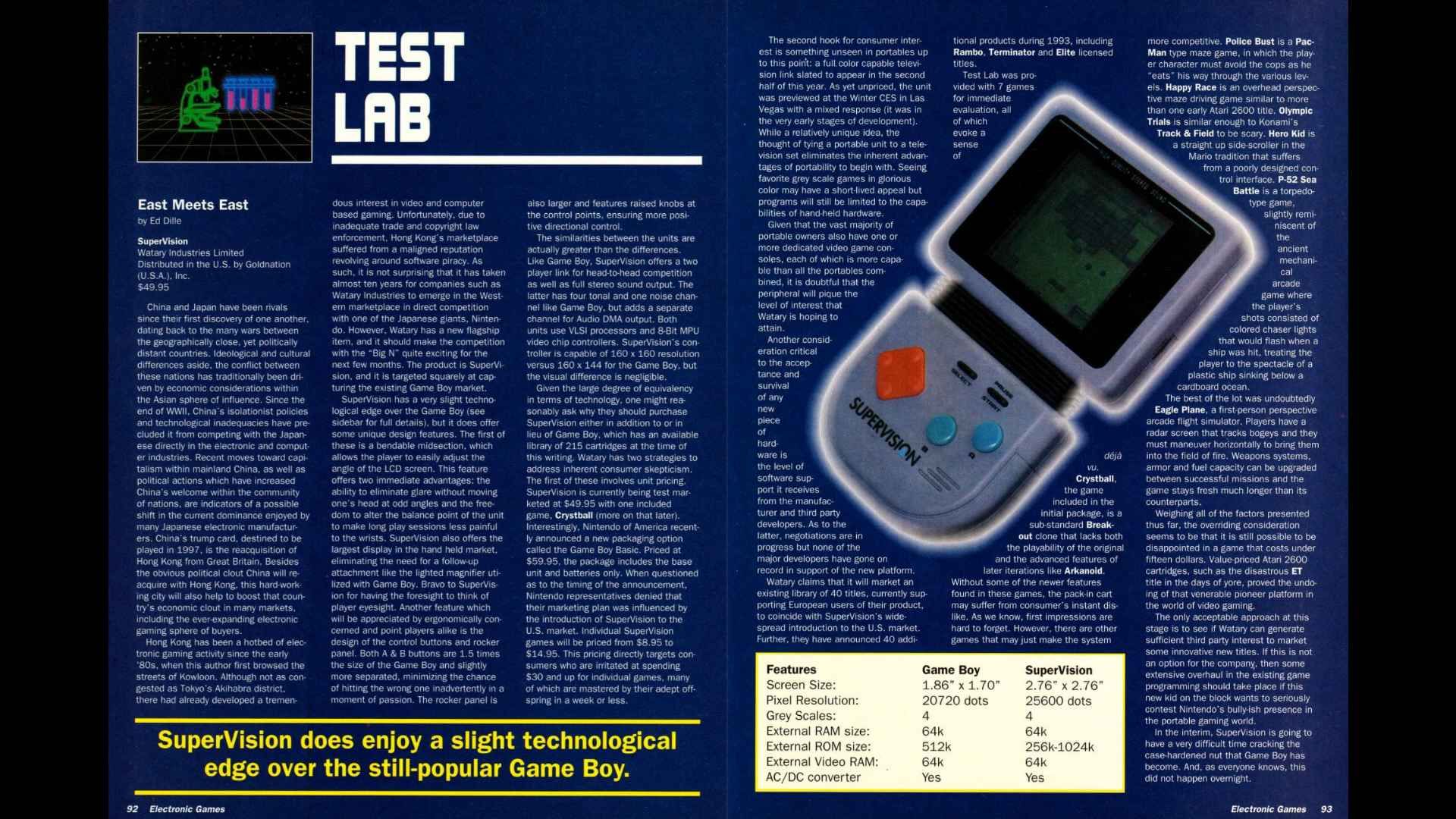
In fact, the best performing markets were the ones where the original model was imported, even leading to a third enhanced model, known as the “Magnum”, but no matter how far you stretch the tracks, ultimately, the metal was always to fail.
The MEGADUCK
BUT, this was a train that was already rolling, for anyone who decided they had a chance. So why the hell not chuck a duck into the equation. A MEGA FRICKIN’ DUCK. YEH… it’s a play on Wonder Swan, come on, this is what they do.
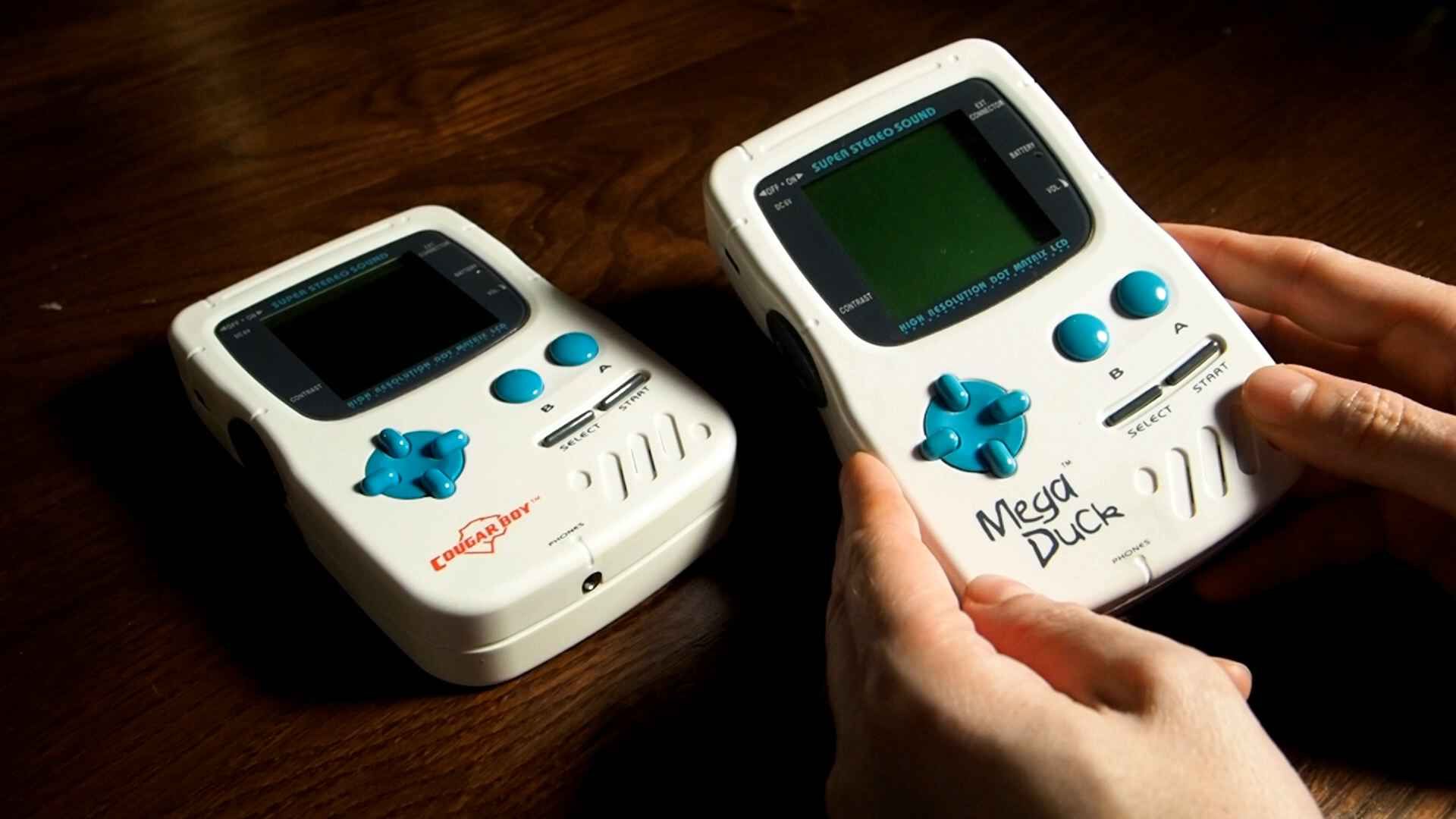
Hong Kong based Welback Holdings weren’t going to let Taiwan do all the lifting.
Launching in the Netherlands, France and Germany in early 1993, the Mega Duck is probably the closest machine to the Game Boy that we have here, and I mean that in terms of build quality, technical specifications and general playability. It’s actually pretty nice all round. The Sharp CPU is almost identical to a Z80, and the 160×144 4 greyscale screen is almost identical to the Game Boy, so much so, that some Mega Duck games were actually ported to the Game Boy as unofficial releases.
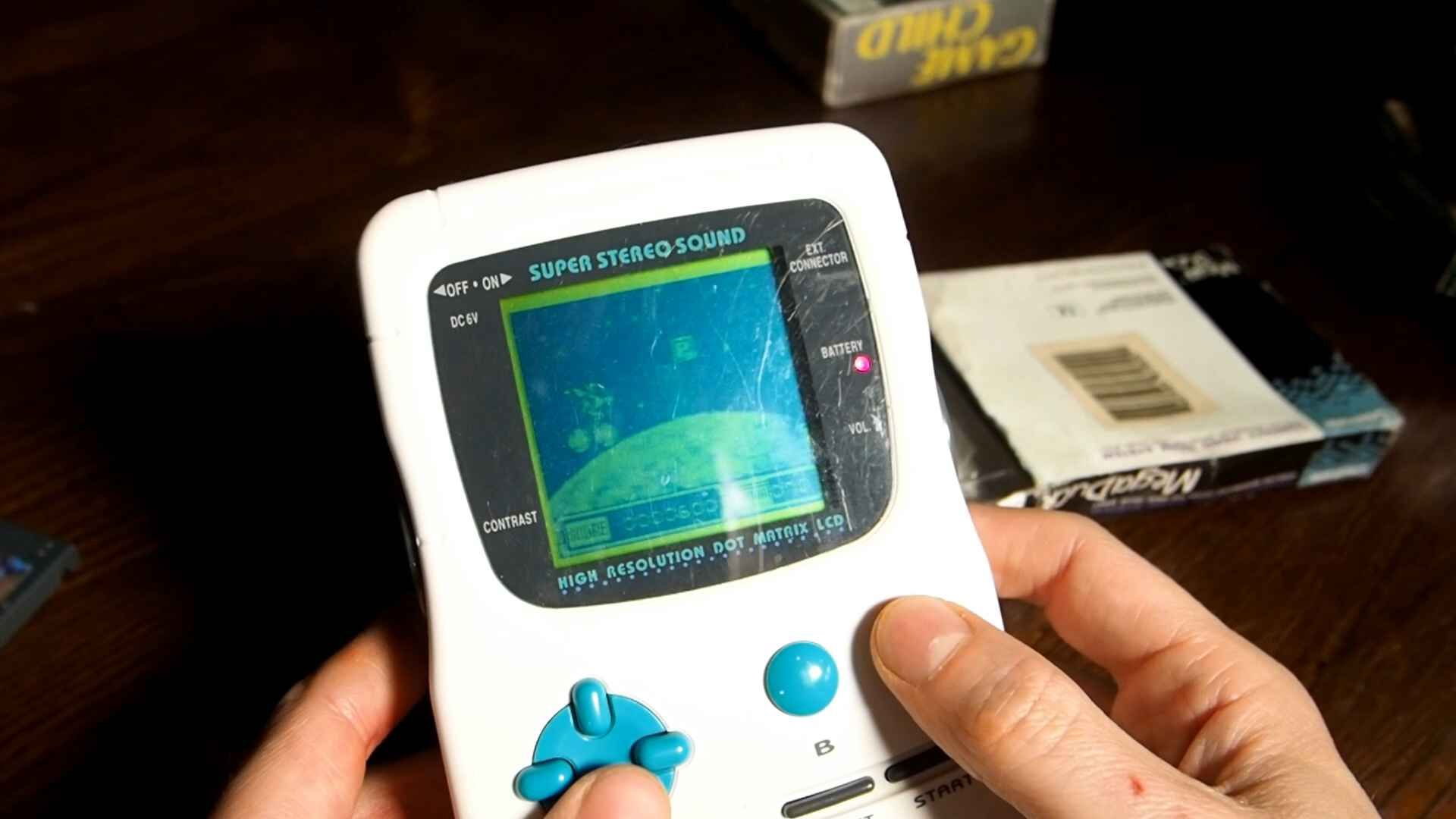
If you can forget the fact that the snake in Snake Roy… Yes… Snake Roy looks like an ever extending penis, then you might get onto titles like Armour Force, Magic Tower, Street Rider and Magic Maze.
But you’ll probably never get over it, I certainly can’t, and so those games will be useless to you, along with the 37 titles in it’s arsenal.
The Duck was also launched in South America as the Cougar Boy, mainly because it apparently sounded more manly and assertive…. *breathes through teeth*… I don’t think that’s the case folks.
Why Tho?
None of these consoles were successful, because of the Game Boy. They tried. By god they tried. But it’s a fools game. They were never going to compete.
NOT EVEN THE GAME CHILD COULD COMPETE.
Relegating these machines to history. Because the Game Boy was such a force, that even toy manufactures made wind up clones like these god awful Tomy Pocket Perils, that had about as much replay value as a cactus, even for a toddler.
So surely, as the Game Boy got older, and more popular, other manufacturers weren’t going to make the game mistake were they?
Ohhh, the Game.com.
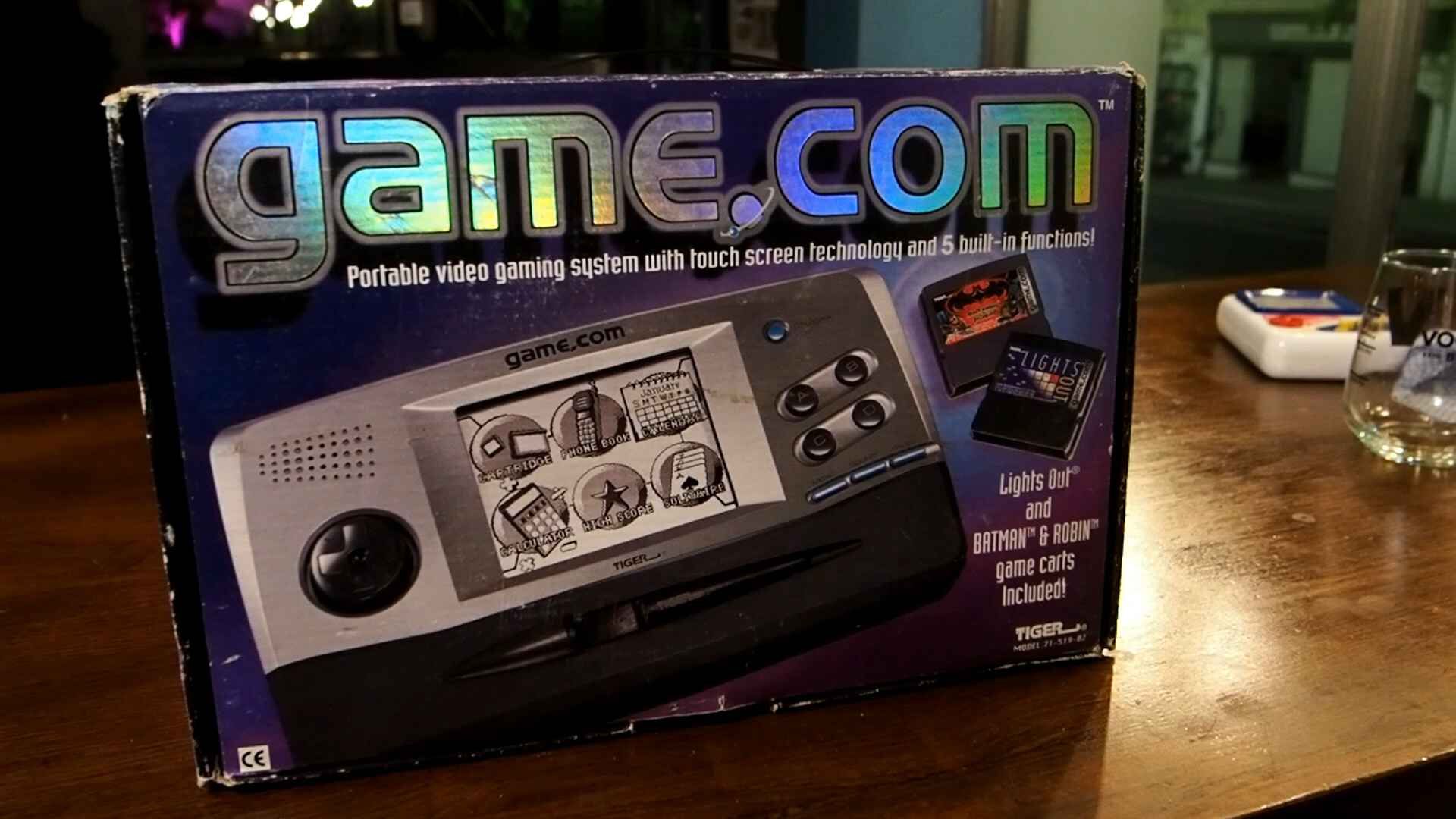
That’s a story for another day.
With that said; even though these consoles were failures, they did in fact still bring joy to the hearts of some in the 90s. Sure, it wasn’t one of the mainstream brands, but, if you had fun with your SuperVision over Christmas 92, then you had fun with it, and that’s all that really matters…. and it’s those people who are still releasing games and hardware today. You can buy a multi-cart for your SuperVision, for your Mega Duck, even for the Game Master. You can buy carry cases and you can even buy carts like Journey to the West; an RPG which only worked on the SuperVision magnum console, but has now been adapted to work across all versions.
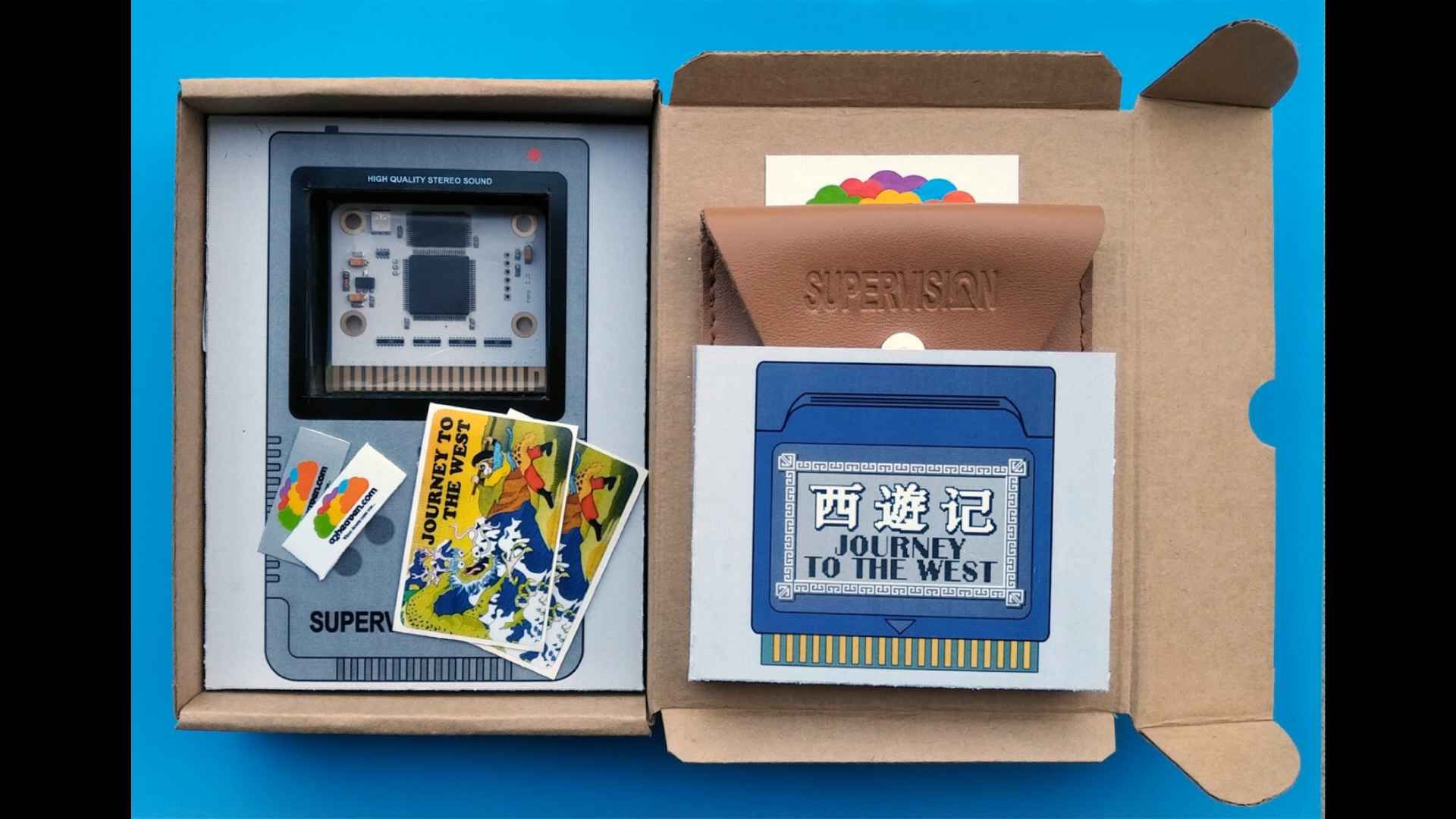
Despite the crapness. There is still love for this hardware, and you know what. Good. I’m glad there is.
Mainstream sucks anyway.
Until next time, I’ve been Nostalgia Nerd. Toodleoo!

Nostalgia Nerd is also known by the name Peter Leigh. They routinely make YouTube videos and then publish the scripts to those videos here. You can follow Nostalgia Nerd using the social links below.
